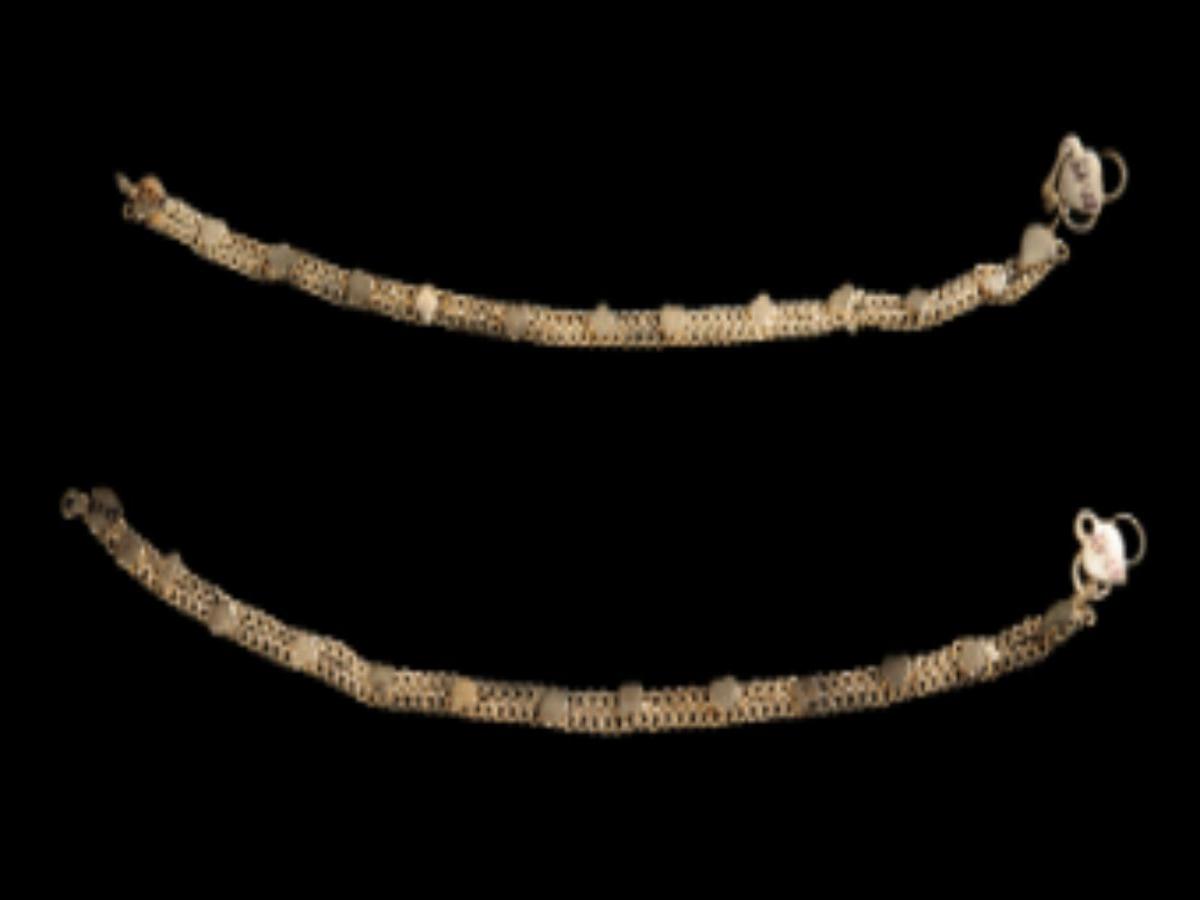State
Tribe Name
Art Type
short description
The Susumna-Tin-Tin-Nu is an antiquated anklet that finds its place among the paraphernalia worn by the women of the indigenous highland Gadaba of Odisha and Andhra Pradesh. The Gadaba people are famed for the aesthetic quality of their jewellery and the brilliance of their dress; ornamentation is an important mode through which the Gadaba people express their identity and social values. The complexity of the design of this anklet distinguishes it from others and gives it the quality of a musical anklet. The anklet is made with two parallel rows of metal chains lying side by-side, with small metal connectors placed at regular intervals to thoroughly join two chains end-to-end in a arrangement that gives it strength and flexibility.
Thumbnail

Filter Postion
Left
Filter Background
Off
Theme
Filter Header Image

content
Image

description
The Susumna-Tin-Tin-Nu is an antiquated anklet that finds its place among the paraphernalia worn by the women of the indigenous highland Gadaba of Odisha and Andhra Pradesh. The Gadaba people are famed for the aesthetic quality of their jewellery and the brilliance of their dress; ornamentation is an important mode through which the Gadaba people express their identity and social values. The complexity of the design of this anklet distinguishes it from others and gives it the quality of a musical anklet. The anklet is made with two parallel rows of metal chains lying side by-side, with small metal connectors placed at regular intervals to thoroughly join two chains end-to-end in a arrangement that gives it strength and flexibility.
The metal pieces are meant to reinforce the design and possibly produce a soft, tinkling sound in motion-tested to assure its rhythmic identity-for which it is named Tin-Tin-Nu, mimicking the delicate metallic notes. It may also be locked when worn around the ankle. Usually, adornments like Susumna-Tin-Tin-Nu are worn during community dances, rituals, or festivities. The soft jingling of anklets adds to the rhythm of Gadaba women's movements, enhancing the aura of their performances in ceremonies-dance like Dhemsa. Symbolically, these anklets stand for femininity, cultural pride, and connection with ancestral traditions. From then onward, changes have occurred, but the Gadaba seem to hold onto these long-cherished customs; so, artifacts like the Susumna-Tin-Tin-Nu continue to be powerful symbols of their tribal heritage and craftsmanship.
The metal pieces are meant to reinforce the design and possibly produce a soft, tinkling sound in motion-tested to assure its rhythmic identity-for which it is named Tin-Tin-Nu, mimicking the delicate metallic notes. It may also be locked when worn around the ankle. Usually, adornments like Susumna-Tin-Tin-Nu are worn during community dances, rituals, or festivities. The soft jingling of anklets adds to the rhythm of Gadaba women's movements, enhancing the aura of their performances in ceremonies-dance like Dhemsa. Symbolically, these anklets stand for femininity, cultural pride, and connection with ancestral traditions. From then onward, changes have occurred, but the Gadaba seem to hold onto these long-cherished customs; so, artifacts like the Susumna-Tin-Tin-Nu continue to be powerful symbols of their tribal heritage and craftsmanship.
Image Mode
landscape
promoted
On
Verified
Off
